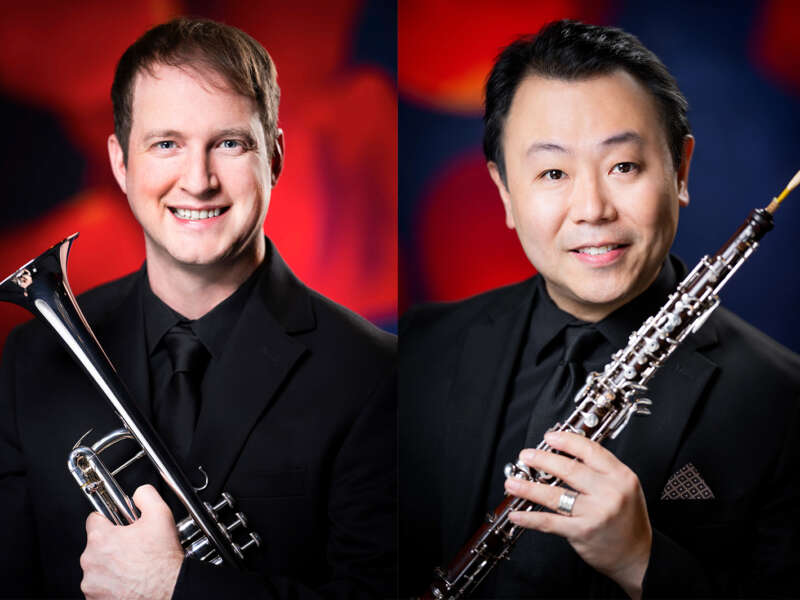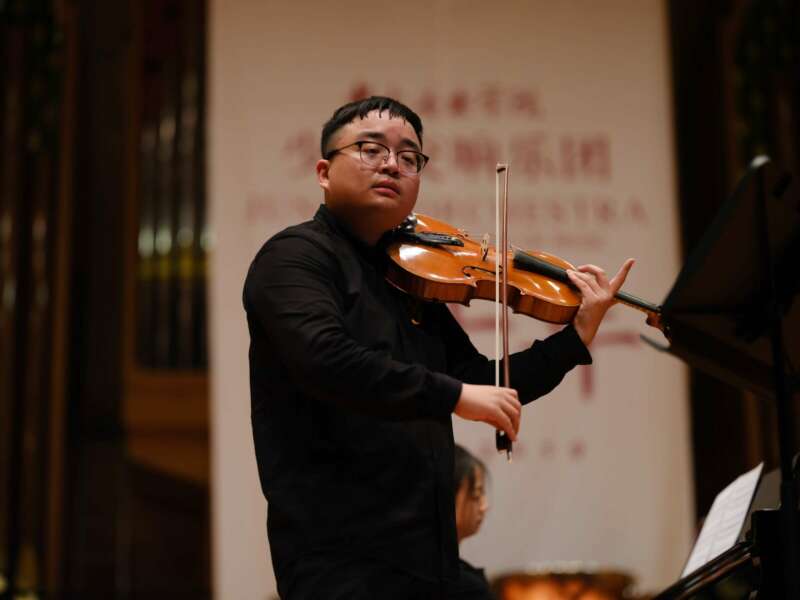STRINGTELLIGENCE BY THOMASTIK-INFELD | 'The Materials Used to Produce Strings' [SERIES]
Thomastik-Infeld’s Director of Engineering and Technology, Mr. Franz Klanner offers insight into the different materials used to produce strings
The Violin Channel recently caught up with Thomastik-Infeld string manufacturer’s Director of Engineering and Technology, Mr. Franz Klanner.
In part 9 of the blog series, Franz this week gives us insight into the different materials used to produce strings.
Why are different materials used to produce strings?
Different materials are needed to provide Thomastik-Infeld’s strings with certain properties. These enable tone (colors, bow noise, etc.) and handling (response, bow feeling, left hand feeling) to form. The list of properties that can be produced by the string design, use of different materials, core and surface materials, string tension (mass per length) and string diameter is long. It includes:
-
- Tonal character (brilliance and warmth)
- Tonal diversity (rich and complex or pure)
- Sound cone when playing (broad or focused)
- Honesty (the string drowns out the instrument or emphasizes the individual character of the instrument)
- Compressive strength by the bow (maximum load capacity in fortissimo, confident response in pianissimo)
- Dynamic range, strength and volume (3P to 3F)
- Modulation property (forgiving versus modulatable)
- Volume modulation (quiet and loud)
- Tonal break-in time (metallic tone, sounds following string change)
- Pitch stability
- Life span of winding (corrosion resistance, abrasion resistance, etc.)
- Tonal life span
- Response when shifting the left hand
- Bow response
- Left-side haptics (finger sensitivity of left hand)
- Right-side haptics (bowing feel)
- Inclination to produce wolf tone, buzzing, whistling
- String tension
What core materials are used at Thomastik-Infeld?
Thomastik-Infeld’s core materials can be
-
- Synthetics (polyamides such as nylon or perlon, polyester or a wide range of polyaryletherketones),
- Chrome steel (uncoated or coated)
- or carbon steel (as wire or rope).
The core material bears the string tension, provides the tonal and haptic direction and has a certain weight (mass per length). Synthetics, for example, have 1.6-2 g/cm3, while steel has 7.3-7.8 g/cm3.
What winding materials are used at Thomastik-Infeld?
Thomastik-Infeld’s winding materials are either flat or round wires made of the following materials:
Aluminum: Aluminum and its alloys are the most widely used light alloys in the string industry. With a density of 2.7 g/cm³, it is the lightest metal in the string industry. For this reason, it is mainly used for violin and viola A-strings with synthetic cores.
Silver: There is a wide range of silver alloys. Some of these may also contain slight quantities of nickel, which, in rare cases, can cause a reaction in nickel allergy sufferers. However, Thomastik-Infeld also uses completely nickel-free silver.
Silver has a density of approx. 10.5 g/cm³ and is largely non-corrosive. However, silver can discolor if it comes into contact with air-borne sulfur. If UV light also comes into contact with the silver, such a discoloration is often more intense and occurs more quickly. However, this has absolutely no effect on the quality or tone of the string. It is simply an optical reaction.
Chromium-nickel steel: Chromium-nickel steel is also known as chrome, Nirosta steel or stainless steel. If the description states chrome, this is always a chromium-nickel steel. Pure chrome is a very brittle material and cannot be processed. This is therefore always a mixed material with a nickel content. Nickel is very corrosion-resistant and has a high density. However, it can sometimes trigger allergies.
Nickel: Nickel has a density of 8.9 g/cm³ and is used as the outermost winding layer for many strings due to its extremely high corrosion resistance and easy workability.
Gold: Gold has a density of approx. 19.3 g/cm³. The material is too weak to be a core wire, as its strength is insufficient. For this reason, gold alloys are only used as winding wires. In its pure form, it would increase the string price too much and yet still provide no significant advantages. Thomastik-Infeld only produces strings with a gold coating.
Tungsten: Tungsten has a density of approx. 19.3 g/cm³, making it just as heavy as gold. Flat wire can only be produced from tungsten round wire with extreme difficulty. For this reason, the material cannot be used as an external winding material – as this always consists of flat wire. This means, tungsten winding is never the outermost layer. Instead, it forms a layer between the core and the outer winding layer.
Titanium: Titanium is the only material that is also biocompatible. This means the material doesn’t trigger any allergies! However, titanium does not produce the ideal response due to its oxide layer. Thomastik-Infeld is currently working on special titanium alloys to develop strings which are not only titanium-coated, but are also made solely of titanium, making them completely suitable for allergy sufferers. Titanium has a density of 4.5 g/cm³.
Tin: There are tin-coated strings in the Thomastik-Infeld catalog. However, tin is not used as a winding material as steel strings are coated, rather than wound. To do this, the steel wire is pulled through a 260° tin bath, which allows it to absorb tin on its surface. The excess is then wiped off. This is how a tin-coated wire is produced. To increase the corrosion resistance, the wire can also have a nickel barrier layer. Thomastik-Infeld gives all its tin-coated E-strings a nickel barrier layer, except for the Alphayue Violin E-string AL01 and the Spirit! Violin E-string SP01.
But Thomastik-Infeld strings are far more than the sum of materials and strands of beautiful tone. Their development and production is a long process and a complex challenge. Thomastik-Infeld strings unite physics, materials science, corrosion science, tooling technology and precision mechanical engineering. The engineers and string experts invest a great deal of time in the development and test phase of each string, and are constantly fine-tuning the manufacturing and measuring methods, so that musicians all over the world are always able to rely on the best quality and unmistakable tone. To us, the highest quality is always both: incentive and obligation. We believe in what we do and we do it out of passion. We want our products to have the best lifespan for both musicians and the environment. Thomastik-Infeld’s high-tech strings are designed to support the musician, their style of playing and the instrument in equal measure. Ultimately, they aim to exploit the instrument’s full potential as well as optimize the musician’s expressive possibilities and joy of playing.
To learn more about Thomastik-Infeld’s string science and get insider tips on how to improve your performance, visit www.stringtelligence.com!
Do you have a burning question about strings? Mail the experts at [email protected]!
PREVIOUS
STRINGTELLIGENCE BY THOMASTIK-INFELD | ‘Examining Double Bass Strings’ [SERIES]
STRINGTELLIGENCE BY THOMASTIK-INFELD | 'Combining Different Strings – Part 2' [SERIES]
STRINGTELLIGENCE BY THOMASTIK-INFELD | ‘Combining Different Strings’ Part 1 [SERIES]
STRINGTELLIGENCE BY THOMASTIK-INFELD | 'Vibrating String Length & String Tension' [SERIES]
STRINGTELLIGENCE BY THOMASTIK-INFELD | 'The Importance of Rosin' [SERIES]
STRINGTELLIGENCE BY THOMASTIK-INFELD | ‘Dealing with String Corrosion and Perspiration’ [SERIES]
STRINGTELLIGENCE BY THOMASTIK-INFELD | ‘Taming a Wolf Tone & Eliminating String Buzzing’ [SERIES]
STRINGTELLIGENCE BY THOMASTIK-INFELD | ‘Taming Your Common Violin E-String Issues’ [SERIES]
april 2024
may 2024
































